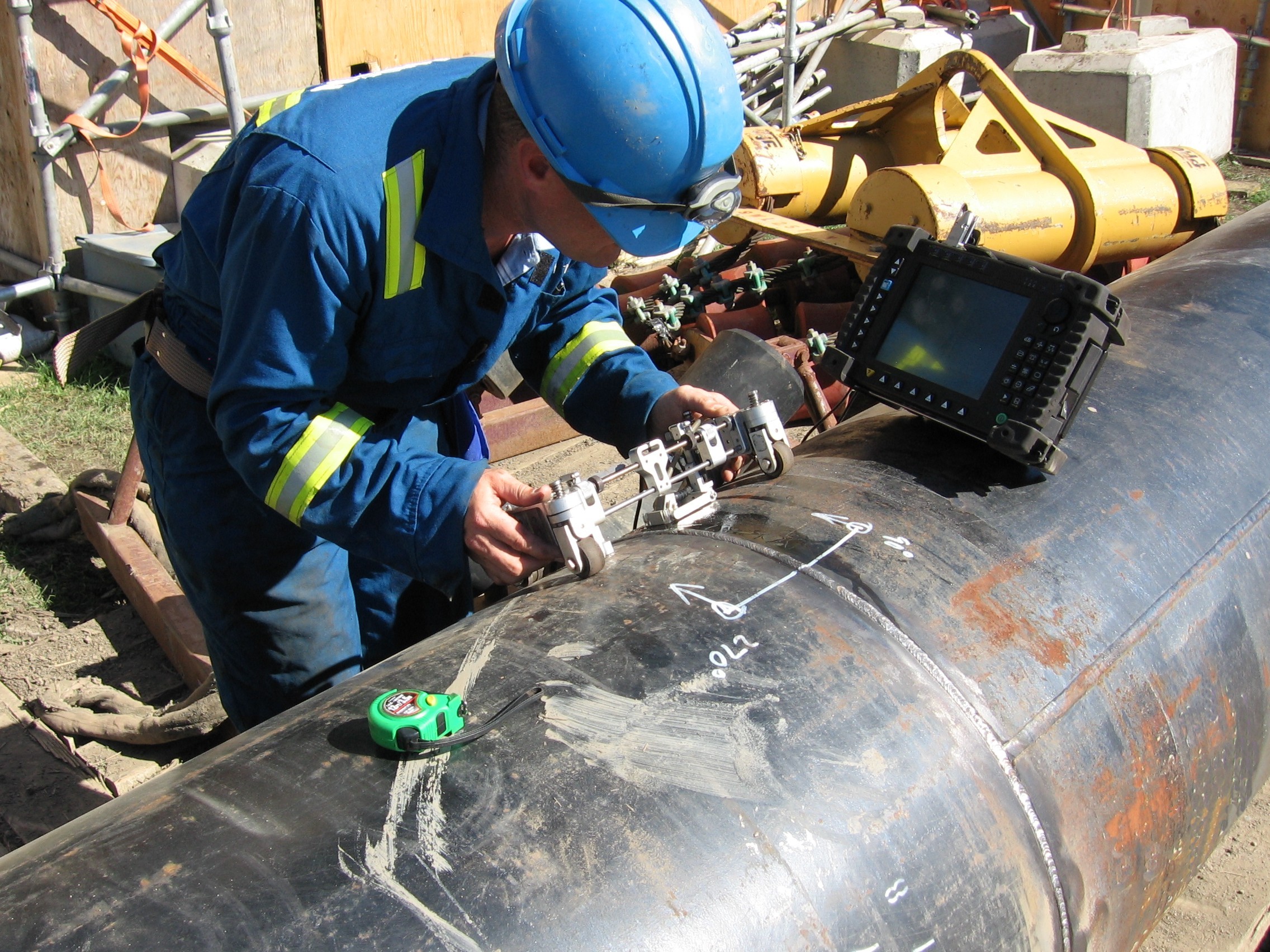
Phased Array Ultrasonics (PAUT)
Welcome to [NDT Inspection Portal]’s phased array ultrasonics (PAUT) group, a place for professionals... View more
Advantage of phased array
Advantage of phased array
Advantage of phased array
Phased arrays have several advantages over conventional ultrasonic probes that derive from the ability to dynamically control the acoustic beam transmitted into the structure under examination.
Phased arrays can reduce inspection times by eliminating or reducing the need for mechanical scanning and by taking advantage of the ability to perform electronic scanning (see animation below). Electronic scanning is accomplished by firing successive groups of elements in the array. Eliminating or reducing mechanical scanning also increases the reliability of the measurements by eliminating changes in (or loss of) coupling, which is a risk each time the probe is moved.
Whereas a conventional probe has one focal length and one orientation, a single phased-array probe allows the user to change the shape and focal point of the ultrasonic beam to optimize each inspection. The acoustic energy can be focused, and delay laws can be applied to steer the acoustic beam. Dynamic-depth focusing allows measurements to be made at several depths in the same amount of time as it takes to a single depth measurement using a conventional probe.
Phased arrays improve the reliability of the measurements and defect sizing can be improved using tools such as sectorial scanning (see figure below), or focalization after reflection off the back wall, two options available with M2M systems. A distinguishing feature of M2M systems is that the user can tune the beam, for example, to define any focal points in a 2S or 3D CAD drawing.
Because of their flexibility, a phased-array probe can replace an entire toolbox of conventional ultrasonic probes. It can thereby simplify complex inspection procedures by eliminating the need for multiple probes, and the associated calibrations and setups. Phased-arrays provide tremendous functionality including real-time imaging.
Compared to measurements with conventional single-element probes, the detection and sizing of defects is much easier and more robust. Instead of struggling to find the optimal single signal that can be obtained with one element, a phased array allows hundreds of signals to be captured at once. The greatly improved efficiency makes it much easier to characterize defects and reduces the number of false alarms. When used in conjunction with simulation, inspection strategies can be optimized to improve detection. Data recording and traceability are also greatly improved. For example, inspection data can be saved and compared to simulated results, helping to confirm whether or not there is a defect in the inspected structure.Sectorial scanning 3D beam profile Sectorial scanning combined with focusing. Using CIVA (or the M2M software), the ultrasonic beam can be simulated. The figure shows the radiated field calculated for a 32-element linear array for a specified range in a sectorial scan (longitudinal mode, -30 degrees to +30 degrees). The simulation makes it possible to verify the size and location of the focal spot for every angle. The 3D visualization is displayed above in the specimen geometry, which greatly facilitates the analysis of results.
Sorry, there were no replies found.
Log in to reply.

